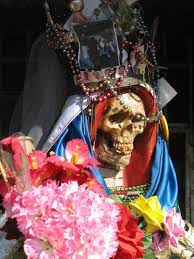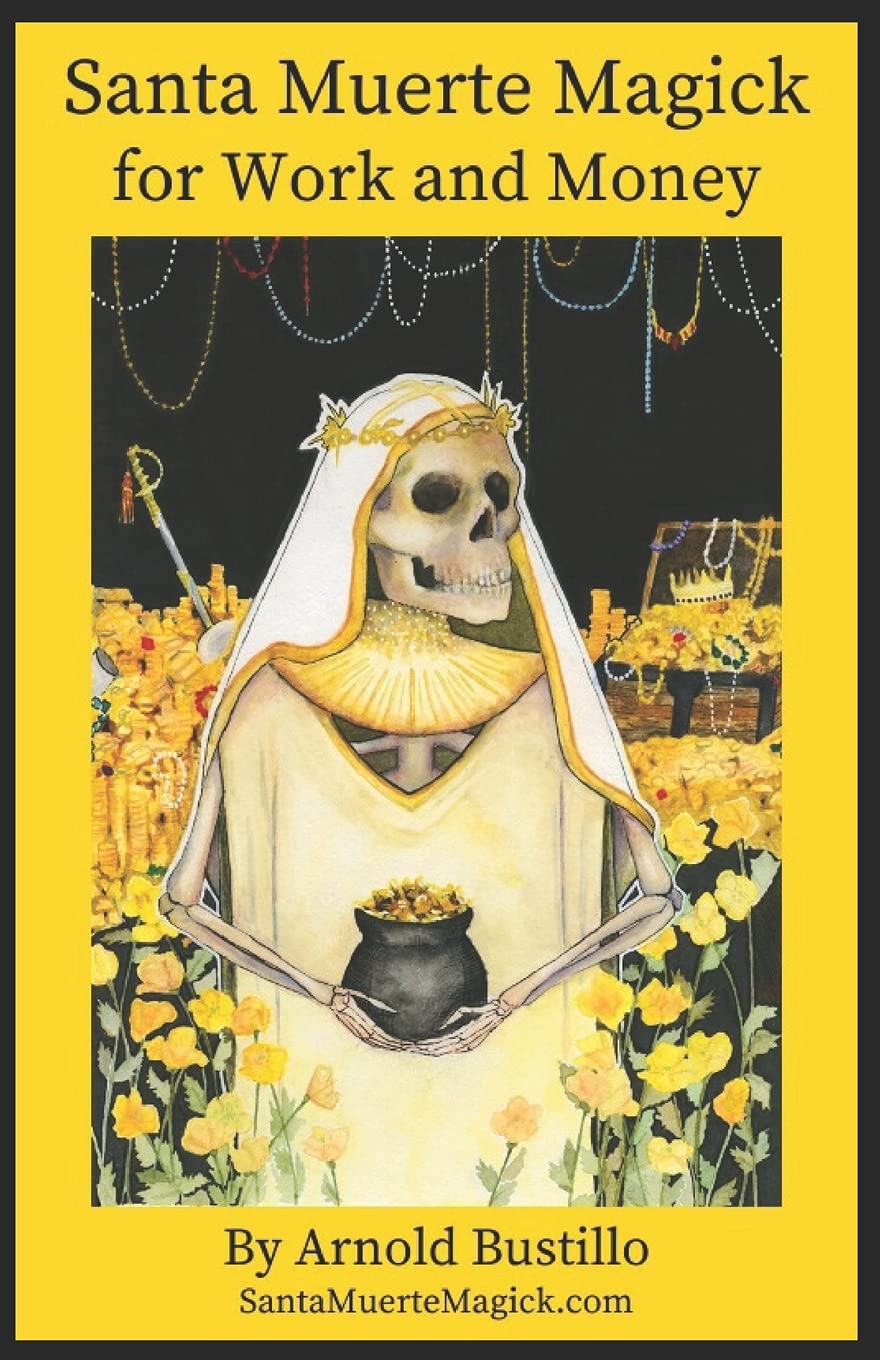The True Story Behind the Santa Muerte Prayers: A blog focusing on the history of La Catrina and its effect on the culture.
Santa Muerte, the saint of death, hear my prayer and let me live a long life.
I ask you to grant me the wisdom to understand what is important in life.
I ask you to grant me the fortitude to walk away from things that are not good for me.
I ask you to grant me the courage to face my fears and fight for what is right.
I ask you to grant me the patience necessary to wait for what I want and need in life.
Santa Muerte, I pray for all these things and more on this day, December 1st, in the year 2020.
churchgist will give you all you want on santisima muerte prayer for money and so much more.
From the mid-1990s, devotion to Santa Muerte (Saint Death) became highly visible, not only in Mexico but also in the United States. Its evolution has coincided with the expansion of organized crime, creating the impression that the icon belongs to a coherent “narco-culture.” This article contextualizes ritual practices at a single altar in Tepito, a Mexico City neighborhood historically specialized in informal and illegal commerce. Its monthly prayer service, which dates to September 2001, now balances the needs of its congregation with a kind of response to accusations against devotees in the mass media. Ironically, the range of gestures that share Santa Muerte iconography encompasses laments and high-minded indignation over blanket attribution of violent intentions to a population, but also a language for making threats. The average devotee is always affected by the likelihood that new acts of violence will be styled as religious. La devoción a la Santa Muerte, desde 1990, es crecientemente visible tanto en México como en los Estados Unidos. El impacto de la devoción y la multiplicación de sus sentidos corren de una manera paralela con la expansión del crimen organizado, generándose el prejuicio de que la devoción se inserta coherentemente en la “narcocultura”. Se contextualizan los ritos en un altar muy concurrido en Tepito, barrio de renombre en la Ciudad de México por su importancia en economías informales e ilegales. Desde el 2001 ofrece, en plena calle, un rosario mensual que se responde a las acusaciones de los medios masivos en contra de sus devotos, al atender las necesidades espirituales de una congregación anteriormente imprevista. Irónicamente el rango de prácticas etiquetadas como “culto a la Santa Muerte” mantiene una tensión entre el rechazo a la depredación

After the Spanish conquest of the Aztec Empire, the worship of death diminished but was never eradicated. Judith Katia Perdigón Castañeda has found references dating to 18th-century Mexico. According to one account, recorded in the annals of the Spanish Inquisition, indigenous people in central Mexico tied up a skeletal figure, whom they addressed as “Santa Muerte,” and threatened it with lashings if it did not perform miracles or grant their wishes. Another syncretism between Pre-Columbian and Christian beliefs about death can be seen in Day of the Dead celebrations. During these celebrations, many Latin Americans flock to cemeteries to sing and pray for friends and family members who have died. Children partake in the festivities by eating chocolate or candy in the shape of skulls. Perdigón Castañeda, Thompson, Kingsbury, and Chesnut have countered the argument proposed by Malvido, Lomnitz, and Kristensen that Santa Muerte’s origins are not Indigenous, suggesting that Santa Muerte derives from authentic Indigenous beliefs. For Malvido this stems from Indigenist discourse originating in the 1930s. Nevertheless, through ethnoarchaeological researches by Kingsbury and Chesnut as well as archival work by Perdigón Castañeda, proof has been established that there are clear links between pre-Columbian death deity worship and Santa Muerte supplication. As Kingsbury has pointed out, to deny the Indigenous roots of Santa Muerte is to promote neo-colonialism and the denial of Indigenous influences and cultures as important still in the current context.
In contrast to the Day of the Dead, overt veneration of Santa Muerte remained clandestine until the middle of the 20th century. When it went public in sporadic occurrences, reaction was often harsh, and included the desecration of shrines and altars. At the beginning of the 20th century, José Guadalupe Posada created a similar, but secular figure by the name of Catrina, a female skeleton dressed in fancy clothing of the period. Posada began to evoke the idea that the universality of death generated a fundamental equality amongst man. His paintings of skeletons in daily life and that La Catrina were meant to represent the arbitrary and violent nature of an unequal society.
Modern artists began to reestablish Posada’s styles as a national artistic objective to push the limits of upper-class tastes; an example of Posada’s influence is Diego Rivera’s mural painting Dream of a Sunday Afternoon in the Alameda Central, which features La Catrina. The image of the skeleton and the Day of the Dead ritual that used to be held underground became commercialized and domesticated. The skeletal images became that of folklore, encapsulating Posada’s viewpoint that death is an equalizer.
Skeletons were put in extravagant dresses with braids in their hair, altering the image of Posada’s original La Catrina. As opposed to being the political message Posada intended, the skeletons of equality became skeletal images which were appealing to tourists and the national folkloric Mexican identity.One of José Guadalupe Posada’s Catrinaengravings (1910–1913).
Veneration of Santa Muerte was documented in the 1940s in working-class neighborhoods in Mexico City such as Tepito. Other sources state that the revival has its origins around 1965 in the state of Hidalgo. At present Santa Muerte can be found throughout Mexico and also in parts of the United States and Central America. There are videos, websites, and music composed in honor of this folk saint. The cult of Santa Muerte first came to widespread popular attention in Mexico in August 1998, when police arrested notorious gangster Daniel Arizmendi López and discovered a shrine to the saint in his home. Widely reported in the press, this discovery inspired the common association between Santa Muerte, violence, and criminality in Mexican popular consciousness.
These keywords were added by machine and not by the authors. This process is experimental and the keywords may be updated as the learning algorithm improves.
Oh Most Holy Death, I invoke you so through your image you may free me from all danger, material or from bewitchment and through this sacred flame you may purify my body from all disgrace and malediction and that in turn love and abundance may come. So be it.
—La Biblia de la Santa Muerte, n.d. 64
